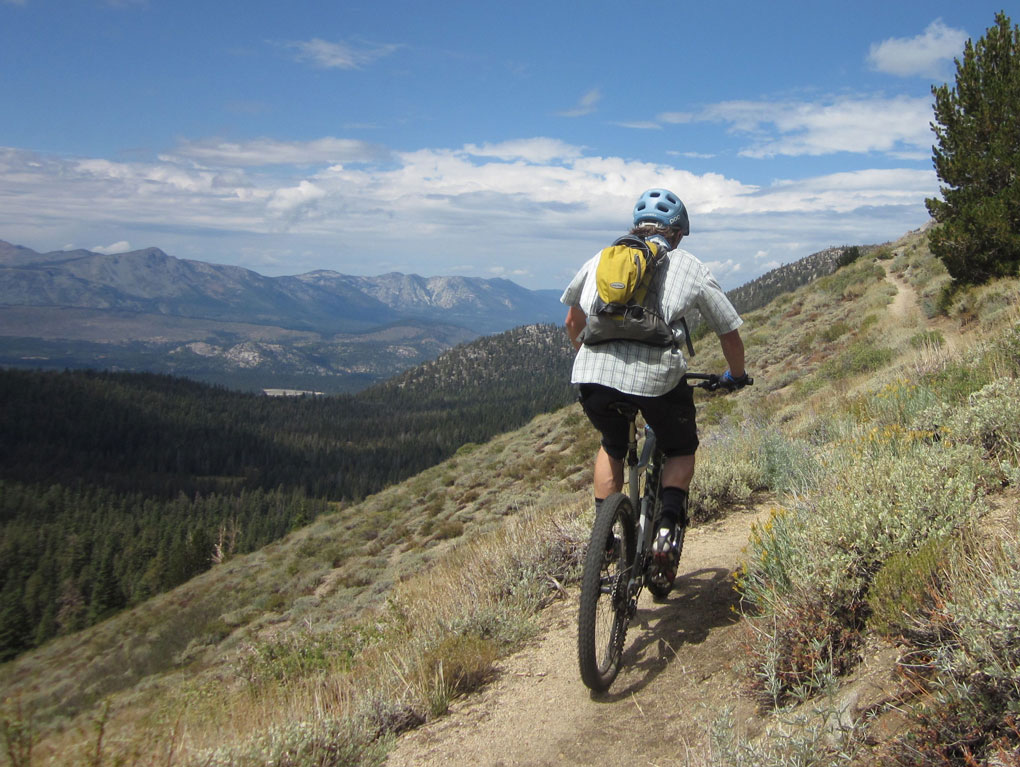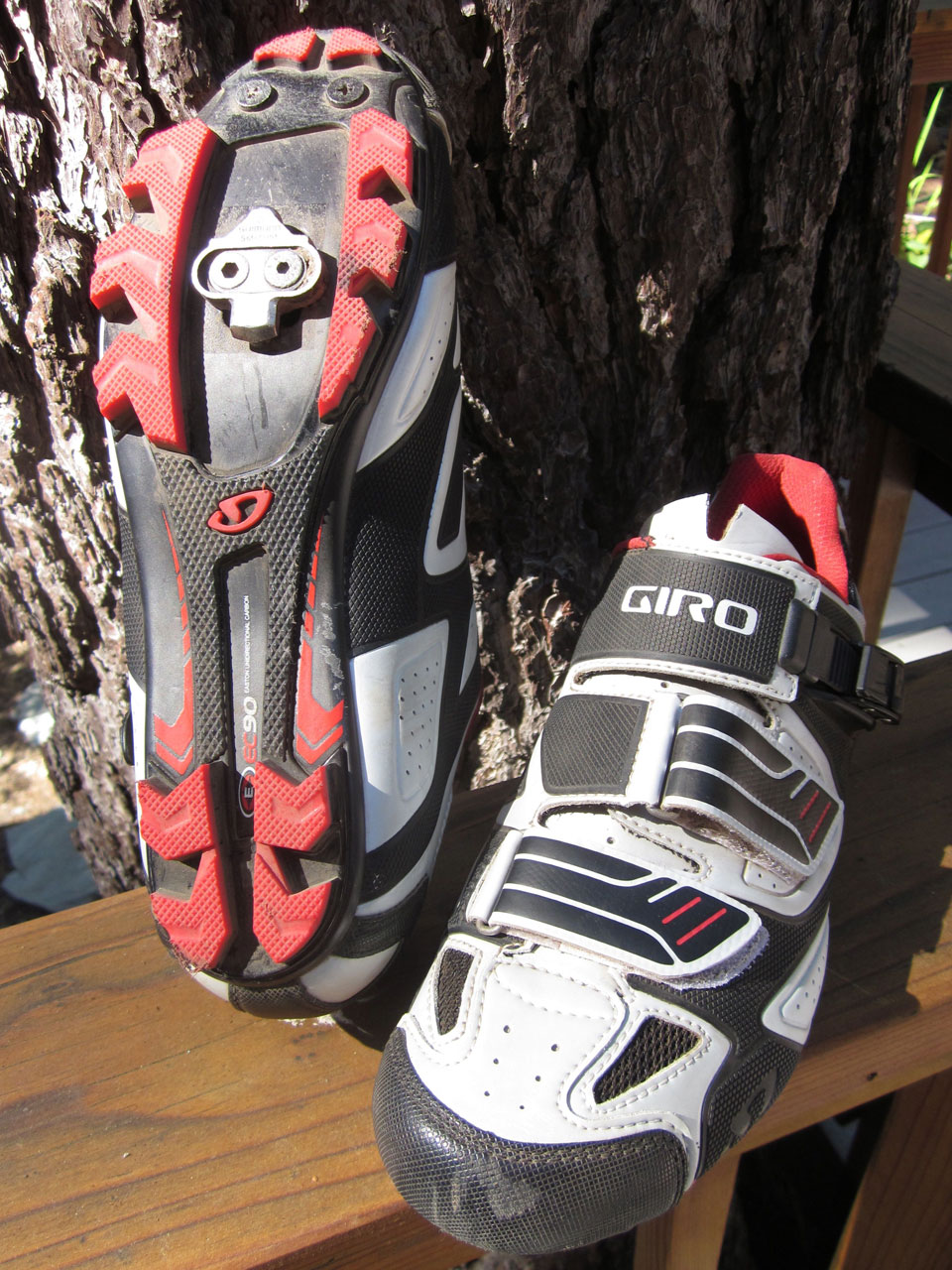The Supernatural Fit footbed also contains X-static anti-microbial fiber, a silver fiber incorporated into the footbed material to combat bacterial growth and odor. It is hard to say how well the X-static works in this application, as I have some of the sweatiest feet going (just ask my girlfriend). As a heat-of-the-day rider, my sweatiness is at a level that no anti-microbial/odor treatment could possibly defeat, so I am not surprised that the X-static couldn’t overthrow my stank entirely. Could my shoes smell worse than they do? Absolutely. But exactly how much the X-static is helping is tough to know.

Velcro Straps and Ratchet System
To secure the Codes on one’s feet, the shoes have two Velcro straps and a ratchet. The Velcro straps are both wide and beefy and hold the lower part of the shoe closed very well. The D-ring of the mid-foot strap is also offset to prevent top-of-the-foot pressure points, which in my experience has worked well.
The ratchet strap is among the best ratchet systems that I’ve ever used on a mountain bike shoe. Unlike older ratchets I’ve used on several different pairs of Sidi Dominator shoes in the past, the Giro ratchet has worked absolutely flawlessly and been maintenance free thus far. There is no skipping, stripping, getting stuck, or other common ratchet frustrations with this system.
The beefy ratchet buckle appears to be designed very intelligently. With each ratchet of the system you get a positive “click” as the ladder progresses one tooth at a time. To release the ladder, you simply depress the tab at the top of the ratchet buckle, so easy you can loosen it with one finger, and while riding. The release of the ladder is one of the finer points of Giro’s ratchet system, as I recall having to use two hands to loosen and release some of the older style ratchets.
Power Transfer
At 355 grams per shoe, the Code is a lightweight piece of equipment. There are definitely lighter shoes available, but unless you’re racing on the World Cup Circuit or doing 100-mile races, I can’t imagine a need for shoes any lighter than these. Much of the Code’s lightweight can be attributed to the use of unidirectional EC90 Carbon in the sole. (Giro is owned by Easton-Bell Sports, and it’s quite common to find Easton Carbon in many Giro shoes.) This has resulted in one of the stiffest shoes I’ve ever used with virtually no discernible flex whatsoever. Whether mashing the pedals seated or sprinting out of the saddle, the Code offers power transfer found only in shoes that cost almost three hundred dollars a pair.
Sole / Lugs
 The Code’s carbon sole features a deeply lugged outsole and a mid-foot traction band to further prevent stumbling around. The sole lugs on the Code are among the deepest that I’ve seen on a shoe of this nature, and the outermost layer of the lugs (the red part) is made of a softer rubber compound for increased traction while walking on rocks and uneven surfaces.
The Code’s carbon sole features a deeply lugged outsole and a mid-foot traction band to further prevent stumbling around. The sole lugs on the Code are among the deepest that I’ve seen on a shoe of this nature, and the outermost layer of the lugs (the red part) is made of a softer rubber compound for increased traction while walking on rocks and uneven surfaces.
While the softness of this rubber does increase traction in certain circumstances, it is soft and therefore wears relatively quickly—I have already worn through the front-most under-toe lugs on my shoes. The midsole traction band adds a little protection to the carbon fiber outsole and prevents you from slipping around any more than you already are when you step down on this area, but scratching the carbon is inevitable. These shoes are absolutely not made for walking, and stumbling around like you’re drunk while hike-a-biking in these shoes is difficult to avoid.
The soles of the Code are made to accept a pair of (included) steel toe spikes, which are roughly half an inch long and provide greatly improved traction when walking on a non-rocky surface. The addition of the spikes, however, made walking on rocks way sketchier than it already was. The difficulty of walking in these shoes attributes for the majority of the scuffs and damage that I have done to the soles and uppers of them.
Durability
Which brings me to the durability of the Code; overall, I’m relatively impressed. There are no frayed stitches, and the Velcro and ratchets work as well as the day I got them.
I am, however, somewhat dismayed by the wear that I’ve experienced on the toe rand of my shoes. The rubber-ish welded black toe rand has been shredded completely through on my left shoe. This excessive wear is due in large part to the poor walking capabilities of these shoes, and is worse than I’d expect from a shoe that costs this much. A harder rubber compound (or plastic) would go a long way toward increasing the longevity of this part of the shoe.
The softer red rubber compound of the sole lugs, which does provide better traction, is also prone to wearing out very quickly. While I appreciate the added traction this softer red rubber compound provides, it worries me that the soles of my $290 shoes might wear out after a season or two.
Breathability
The Code also doesn’t offer much in the way of venting; in fact, they only have two small vents per shoe. Above the toes you’ll find two small mesh vents on each shoe—not a lot of air circulation, but certainly better than nothing. I would appreciate a couple more vents, especially during the hot, mid-summer months in California, when and where I do most of my riding. The Code’s lack of vents will be welcome during cooler fall and spring rides, but, in my opinion, the Code is under-vented for a shoe designed for a high-intensity activity like trail riding or XC racing.
Colors
The Code is available in three colorways, all black, white/black, and magnesium/black. I opted for white/black and I am actually pretty impressed by how white the shoes still are. If I actually took the time to clean the shoes off I think the uppers are almost as white as the day I got them.
Cleat / Pedal Compatibility
In the period of time that I’ve tested these shoes, I have only used them with Shimano pedals. My cleats are positioned comfortably directly in the middle of the cleat area with plenty of room on both sides to accommodate other brands of cleats. Despite the depth of the sole lugs, my cleats sit only about 1 millimeter below this level (countersunk, if you will). This is very nice when walking around my house with my bike shoes on, as I don’t scratch the kitchen floor with the cleats, but could this cause compatibility problems for people riding with clipless flats? I’d imagine that people buying shoes this expensive are generally not using clipless flats, but if you have experience with this, your comments are welcome.
Bottom Line:
I’m incredibly impressed with the performance and fit of the Giro Code shoes, but somewhat underwhelmed by the durability of the soles and toe rand. The synthetic uppers have broken in to truly fit like a glove, and the EC90 carbon soles provide for impressive transfer of power from my feet to the pedals.
Hardcore trail riders and XC racers looking for a stiff, lightweight shoe, who don’t get off their bikes very often, will be pleased with the fit and power of the Code. The durability issues that I have pointed out are associated primarily with walking in these shoes, so if you hike-a-bike—at all—I suggest looking elsewhere.
If the $290 price tag of these shoes is prohibitively expensive for you, check out the Gauge ($225) or the Privateer ($150) for shoes with similar fit and features as the Code.
